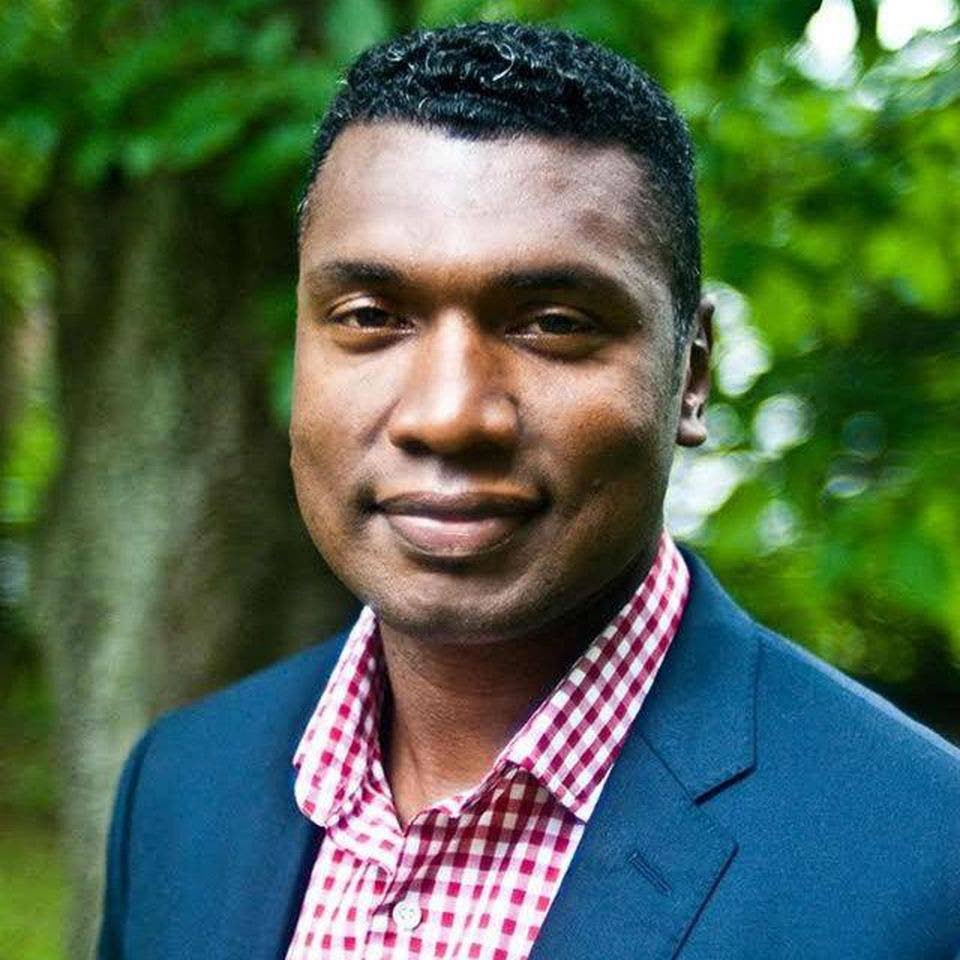Inspired by Moruga sky

EXPLAINING how he got into science, Dr Stephon Alexander, a 47-year-old theoretical physicist says, “I was exposed to the clear night sky in Moruga when I was a kid and I would gaze at the stars and wonder what was out there. I think it started there as a young kid.”
The Trinidadian-born physics professor was the scientific adviser on Ava DuVernay’s recently released adaptation of Madeleine L’Engle’s 1962 novel A Wrinkle in Time. The movie’s cast includes Oprah Winfrey, Chris Pine, Reese Witherspoon and Storm Reid.
Alexander advised on any aspect of the film that required science, whether it was set design, scripting, doing the equations seen in the movie or designing one of the central characters (Dr Murry’s) experimental space travel apparatus.
When he left TT at eight and moved to the Bronx, New York, Alexander did a BSc in Science at Haverford College in 1993. He has two masters degrees in physics and electrical engineering and a PhD in physics from Brown University. Alexander is now a physics professor at Brown University.
Two years ago, Alexander, who is also a cosmologist and musician, was contacted through the US National Academy of Science’s Science and Entertainment Exchange, to be interviewed to work on the movie.
He said, “I flew out to Disney Studios to interview with Ava, her creative team and producers, and they chose me.
I think they liked the way I was able to explain the physics in a way that they can understand and incorporate their ideas as well, to bring together the movie.”What made Alexander stand out as well was his research interest. He said in a phone interview, “My research focuses on trying to understand fundamental physics, what are the fundamental laws of physics...It was because of my expertise as a researcher in the area of Einstein’s theory of general relativity.”
The book, he said, used Einstein’s theory of general relativity, of the warp in space and time described by L’Engle as a wrinkle.
BOOk continues on Page 6B
The characters Meg Murry, the witches (Mrs Who, Mrs Which and Mrs Whatsit) and Dr (Alex) Murry travel to very far distant planets, he explained, and to do that, “We have to use Einstein’s theory of general relativity so that you can create shortcuts through the fabric of space and time. That shortcut was called a wrinkle in time.”
While his life’s work is physics, he also has another passion; music, specifically, jazz. A 2016 NPR article about Alexander and his passions said, “The physics was mostly work. The music, mostly fun. But there were times when the two collided.”
Collide they did indeed. Alexander is also the author of the Jazz of Physics, published in 2016. The book “uses jazz to answer physics’ most vexing questions about the past and future of the universe” but also tells of Alexander’s journey into physics.
He hopes this book and work inspires TT and the Caribbean’s youth to pursue careers in science.
“Part of why I wrote that book was to also inspire young Trinidadians and people from the Caribbean to see that they too can also get excited about the sciences. They don’t have to be somewhere else. There is a lot of mystery. Some of that also started with my love for music.”

The book has become so popular it has been translated into nine different languages.
The Jazz of Physics’ first chapter tells of calypso music and how it also influenced him to get into physics.
While some might imagine the arts and science are far removed, Alexander’s story proves just the opposite. As much creativity is needed in the field of science, he told Newsday, as it is needed in crafting calypsoes.
As the world pushes greater STEM (science, technology, engineering and mathematics) education for youth, Alexander believes there is still work to be done in TT and the Caribbean. “I applaud some of the efforts that especially entities like Niherst (National Institute of Higher Education, Research, Science and Technology) have taken. I have been involved with that over the years, anywhere from coming down to TT. I was awarded the Rudranath Capildeo Award for Science from Niherst (2013). They have been doing a lot of good work in trying to promote the relevance of STEM education for the youth in TT.
“But I think that more could be done, and I think one way more could be done is to involve those of us from the diaspora who are now established people. I think more could be done to engage with us in the diaspora in England, in the US, Europe, those of us who are from the soil and interested and care to create opportunities for our talented young people and to transform our culture, which is a culture of tremendous creativity, into creativity in STEM.”
Alexander’s own life speaks to the intertwining of the creative arts and science. For him as a saxophonist, music is the physics of emotion. “In both cases in science (physics) and music there is improvisation.
“There is making guesses and seeing where those guesses take you. A lot of times in physical research you have to make guesses and that is really similar to when we improvise in music and these guesses can lead to new solutions and innovations. That is kind of what happened with the steelpan.”
He plays with Grammy-award winning musicians, drummer Will Calhoun, guitarist Vernon Reid and bass guitarist Melvin Gibbs at live venues. Alexander, Calhoun and Gibbs play in a group called The God Particle.
Alexander last visited TT three years ago and hopes to be invited back.
“I look forward to giving a nice public lecture in TT about my adventures in music and physics and A Wrinkle in Time.”


Comments
"Inspired by Moruga sky"